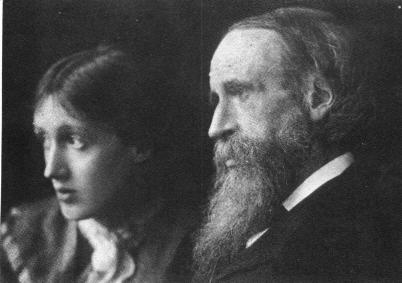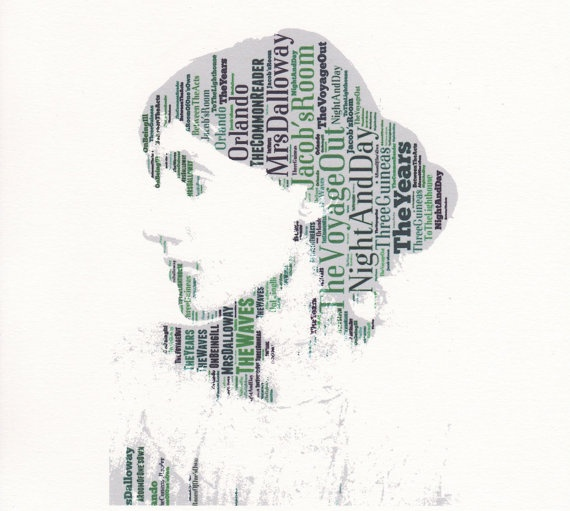Emma
BLOGS: THE ONLINE REVOLUTION
We live in the era of the internet: social media, real-time information, and electronic devices. We are always connected, and we have become slaves of technology in a world in which reality is concealed behind a screen. Nowadays, there are many ways to share information; the media is no longer what our grandparents knew. One of the most revolutionary trends of our times is blogging. People share their thoughts, experiences, and blogs have become a way to raise our voices online, in others word, we have become a mediatized society. Taking as a reference a conference by Professor Monika Kopytowska on “Power, Politics and Blogs”, we have selected some ideas on the importance of blogs.
Blogs are online tools that allow people to be interconnected. They allow us to create a space where people can communicate with other people around the globe, thus replacing face-to-face communication: we are living in a post-human society. In the times of capitalism, the cyberspace and especially blogs have twisted the concept of consumerism. Users not only can participate in the process of consumption, but also all of us can easily become producers.

Besides, a blog can be used for many different purposes. Depending on their aim, we encounter many different types of blogs: ranging from random thoughts created by ordinary citizens to political blogs used as a campaigning tool. Therefore, blogs have become a new form of intersexuality in which the boundaries between creator and user are blurred. The problem with the democratization of the internet is that global accessibility comes with some dangers; there are thousands of cases of radical groups spreading risky messages that could compromise the safety of some users. Moreover, there is no way to know who is behind the screen; blogs allow us to decide whether we want to be transparent or hide ourselves behind a fictitious identity.
Nevertheless, we cannot ignore that the blogging sphere has open up a new world of possibilities:
-Healthcare: there are many bloggers who share their experiences and give advices related to weight loss or self-diagnosis. Even though some of them might be of help, beware of the reliability of the information!
-Culture: if you like to travel, there many different blogs that will provide you with the best tips to go wherever you want: now, we can all travel without leaving our houses. Moreover, whether you want to check the review of a book or a movie or you need to cook Christmas dinner, blogs can be of help.
-Politics: politicians can get closer to the people, and we can all share our political views and engage in any political debate.
And…
-Educational purposes: blogs can be a source of useful information at the time of studying. There are blogs to learn new languages, and some others allow you to expand your knowledge of specific fields such as linguistics or literature. Hence, this blog would belong to this category because we wanted to share with you interesting facts about Virginia Woolf.
Blogs constitute a new genre that has allowed us to create a sense of communal bonding. We can construct our identity online and share our ideas and opinions with the rest of the online community. We are no longer alone in the technological world.
Virginia Woolf in Downton Abbey.
Did you know that Virginia Woolf appears in the season 4 of this popular TV show?

She appears in the first episode of this last season. Edith Crawley meets her during a party in 1922. This party is hosted by Michael Gregson at his apartment in London.
Although she is shown in pictures talking to Edith and Michael, in the PBS broadcasting she briefly appears without any dialogue.
If you want to know more interesting things about Virginia, stay on track!
Here you can find the references used to write this post:
Some Extra Info
If you are really interested on the life and works of Virginia Woolf, and you really want to explore her world, the following tools might be of help:
1. The Oxford Biographies website will provide you with an overview of the main topics related to our author:
2. If you want to read Mrs Dalloway again, you can download the book in different formats in here (say thanks to the University of Adelaide):
https://ebooks.adelaide.edu.au/w/woolf/virginia/w91md/
3. JSTOR is a digital library where you can find thousands of academic papers related to this topic:
4. This video might be a good introduction to Mrs Dalloway
5. Finally, if you really want to engage with the characters and the story, visit our website
http://ticwoolf.wix.com/virginia-woolf
Send us your questions here or leave a comment below:
A quick overview of her life.
 Adeline Virginia Woolf was a novelist, essayist, publisher, and critic. She is especially famous for her novels and her feminist writings. She is better known as Virginia Woolf and she was born in London the 25th January in 1882. She lived a hard life marked by her parents’ dead and her mental illness. Nevertheless, this was not an impediment to have a wide bibliography, she wrote not only novels, but also essays and articles in newspapers.
Adeline Virginia Woolf was a novelist, essayist, publisher, and critic. She is especially famous for her novels and her feminist writings. She is better known as Virginia Woolf and she was born in London the 25th January in 1882. She lived a hard life marked by her parents’ dead and her mental illness. Nevertheless, this was not an impediment to have a wide bibliography, she wrote not only novels, but also essays and articles in newspapers.
Virginia’s father, Sir Leslie Stephen, was a biographer and mountaineer. Julia, her mother, was renowned for her beauty and she modeled for many painters including Edward Burne-Jones. Both of them were widows and, for this reason the house was full of children (eight in total) both from previous marriages and from this one as well. Leslie and Julia had four children together: Virginia was the third one. Thanks to his father’s career, Virginia had access to an extensive library, and from an early age she was determined to be a writer. She never went to school; thanks to her family’s wealth she was educated at home.
In May 1895, Julia died from rheumatic fever. Virginia was very close to her mother and this caused her to have a mental breakdown at the age of thirteen. She suffered another breakdown when he father died in 1904. During this time, she will try to kill herself for the first time.
Without her parents giving economic support to the family, Virginia began to teach English literature and history at an adult-education college in London. At the same time, she wrote articles and reviews for several publications including The Guardian, The Times Literary Supplement, and The National Review. In 1908 Virginia started to write her first novel Melymbrosia. She finished it in 1913, and renamed it as The Voyage Out. However, she suffered a severe mental breakdown after her marriage, and for this reason the novel was not published until 1915.

Virginia was part of the Bloomsbury Group, an intellectual circle of artists and writers. There, she met her future husband, Leonard Woolf, and they got married in 1912. The couple had a happy married life and they also collaborated professionally. Together they founded the Hogarth Press, where they published works by Woolf and T. S. Eliot, among others as well as commissioned contemporary artworks. The Bloomsbury Group had a liberal approach to sexuality and Virginia Woolf started a relationship with Vita Sackville-West, Harold Nicolson’s wife. From this relationship Woolf wrote Orlando, a literary love letter. Both of them remained as good friends until Woolf’s death.
Hogarth Press became a business around 1922. From 1921 onwards Virginia always published with the Press. She published a collection of experimental short stories Monday or Tuesday. In 1922 she wrote her first experimental novel, Jacob’s Room. The three novels that are generally considered to be her greatest claim as a Modernist writer are Mrs. Dalloway (1925), To the Lighthouse ( 1927), and The Waves (1931).
After moving out from London due to the destruction of her home by the German army, Virginia committed suicide the 28th March in 1941, when she pulled on her overcoat, walked out into the River Ouse and filled her pockets with stones. The stream took her with it and her body was found three weeks later. Her last work was Between the Acts, published posthumously by his husband.
She left a suicide note for her husband, you can read it below.

Dearest,
I feel certain I am going mad again. I feel we can’t go through another of those terrible times. And I shan’t recover this time. I begin to hear voices, and I can’t concentrate. So I am doing what seems the best thing to do. You have given me the greatest possible happiness. You have been in every way all that anyone could be. I don’t think two people could have been happier till this terrible disease came. I can’t fight any longer. I know that I am spoiling your life, that without me you could work. And you will I know. You see I can’t even write this properly. I can’t read. What I want to say is I owe all the happiness of my life to you. You have been entirely patient with me and incredibly good. I want to say that – everybody knows it. If anybody could have saved me it would have been you. Everything has gone from me but the certainty of your goodness. I can’t go on spoiling your life any longer.
I don’t think two people could have been happier than we have been.
Here you can find the references used to write this post:
A&E Television Networks. “Virginia Woolf.” Biography.com. 2015. Web. 10 Mar. 2015.
<http://www.biography.com/people/virginia-woolf-9536773#death>
Clarke, S. N. “Virginia Woolf: A Short Biography”. Virginiawoolfsociety.co.uk. 2015. Web. 10 Mar. 2015. < http://www.virginiawoolfsociety.co.uk/vw_res.biography.htm>
The European Graduate School. “Virginia Woolf – American Writer – Biography”. Egs.edu. 2015. Web. 10 Mar.
2015. <http://www.egs.edu/library/virginia-woolf/biography/>
“The Principal Works Of Virginia Woolf”. Virginiawoolfsociety.co.uk. 2015. Web. 10 Mar. 2015.
<http://www.virginiawoolfsociety.co.uk/vw_res.principal.htm>
Scutts, Joanna. “Virginia Woolf | The Core Curriculum”. College.columbia.edu. 2015. Web. 10 Mar. 2015.
<http://www.college.columbia.edu/core/content/virginia-woolf>
Svendsen, Jessica, and Pericles Lewis. “Virginia Woolf”. Modernism.research.yale.edu. 2015. Print.
<http://modernism.research.yale.edu/wiki/index.php/Virginia_Woolf>
If you want to know more…
Welcome Woolfers
Welcome Woolfers, this blog will be devoted to literature and cinema. We will explore the main aspects of Virginia Woolf’s life and work as well as some other curious facts. Whether you are familiar with some of her most important novels, such as Mrs Dalloway, or you just want to explore the main themes and characters a bit more, this blog will be a journey into the modernist world of the British author. Before beginning your adventure with us, let’s check how much you know about this topic! Click here to check it out!


